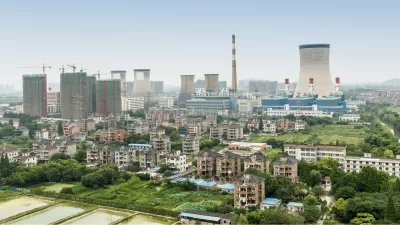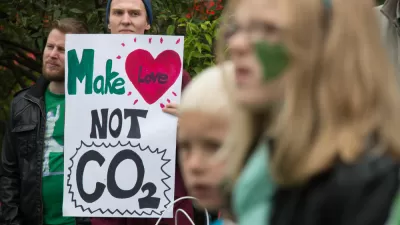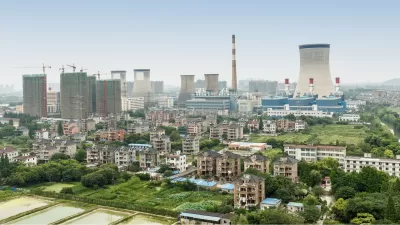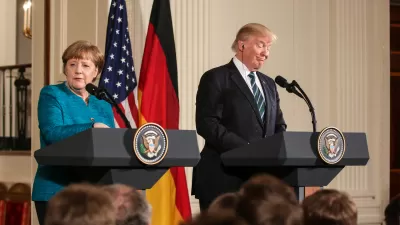President Xi Jinping wants China to replace the U.S. as the world's leader in fighting climate change, yet emissions from China are projected to increase at a higher rate than any other major emitter, according to the Global Carbon Project.

Last month, "President Xi Jinping of China promised that his country would take a “driving seat in international cooperation to respond to climate change,” reports Somini Sengupta on Nov 14 for The New York Times.
But can China really be in the “driving seat” when it is burning so much coal that its carbon emissions are forecast to rise this year?
The annual update by the Global Carbon Project, published Nov. 13, projects these changes in carbon dioxide emissions from the three largest emitting countries, the European Union, and the 'rest of the world':
- China (10.5 Gt CO2; +3.5%),
- India (2.5 Gt CO2; +2.0%),
- United States (5.3 Gt CO2; −0.4%),
- European Union (3.5 Gt CO2; −0.2%),
- and the rest of the world (15.1 Gt CO2; +2.3%). ['ROW' in graph below]

Source: IOP Science
Notwithstanding the 3.5 percent increase, "China...is well on track to meet the commitments it made under the Paris climate accord...," notes Sengupta. "The bar, it turns out, is pretty low."
The increase is blamed on coal, but experts and observers don't appear particularly worried because of energy policies the country, the world's largest coal consumer by far, has adopted and because it meets their air quality goals which are more pressing than climate change.
Li Shuo, of Greenpeace China, said the projected rise in emissions would not affect China’s overall trajectory toward slowing emissions at home and stepping up diplomatically.
“China can continue to play a leading role in the global climate debate, despite this short-term increase of emissions, which is temporary,” he said.
Another paradox: While China attempts to wean itself off coal by investing in renewable energy, "it is building coal plants abroad as part of an ambitious 'One Belt, One Road' initiative, designed to expand Chinese global influence," observes Sengupta.
As for alternatives to being the world leader in fighting climate change, Lisa Friedman reports on four, in addition to Xi Jinping, for The New York Times on Nov. 12.
Hat tip to Mark Boshnack.
FULL STORY: Why China Wants to Lead on Climate, but Clings to Coal (for Now)

Planetizen Federal Action Tracker
A weekly monitor of how Trump’s orders and actions are impacting planners and planning in America.

San Francisco's School District Spent $105M To Build Affordable Housing for Teachers — And That's Just the Beginning
SFUSD joins a growing list of school districts using their land holdings to address housing affordability challenges faced by their own employees.

The Tiny, Adorable $7,000 Car Turning Japan Onto EVs
The single seat Mibot charges from a regular plug as quickly as an iPad, and is about half the price of an average EV.

Seattle's Plan for Adopting Driverless Cars
Equity, safety, accessibility and affordability are front of mind as the city prepares for robotaxis and other autonomous vehicles.

As Trump Phases Out FEMA, Is It Time to Flee the Floodplains?
With less federal funding available for disaster relief efforts, the need to relocate at-risk communities is more urgent than ever.

With Protected Lanes, 460% More People Commute by Bike
For those needing more ammo, more data proving what we already knew is here.
Urban Design for Planners 1: Software Tools
This six-course series explores essential urban design concepts using open source software and equips planners with the tools they need to participate fully in the urban design process.
Planning for Universal Design
Learn the tools for implementing Universal Design in planning regulations.
Smith Gee Studio
City of Charlotte
City of Camden Redevelopment Agency
City of Astoria
Transportation Research & Education Center (TREC) at Portland State University
US High Speed Rail Association
City of Camden Redevelopment Agency
Municipality of Princeton (NJ)





























